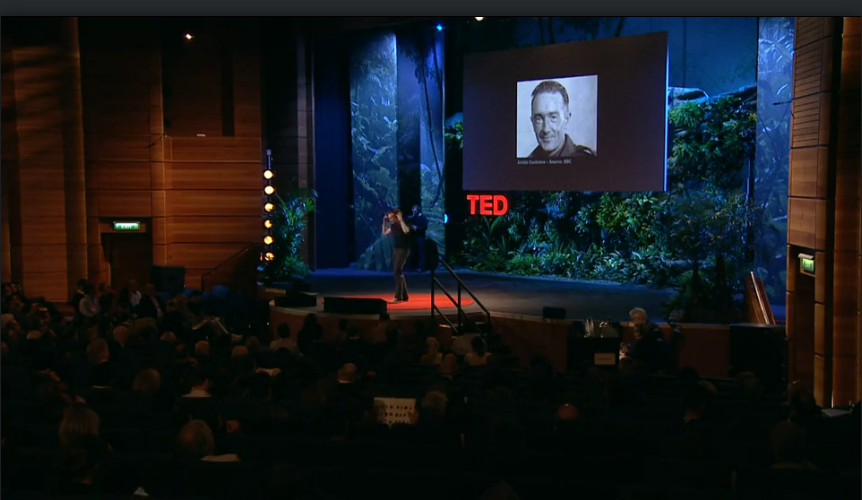Well let me give you an example.
讓我來給你們一個例子。
Imagine for a moment that, instead of Tim Harford in front of you, there was Hans Rosling presenting his graphs.
你們想象一下,現在如果站在你們面前的不是我,而是漢斯·羅斯林在展示他的圖表。
You know Hans: the Mick Jagger of TED.
你們知道漢斯: TED的米克·賈格爾。
And he'd be showing you these amazing statistics, these amazing animations.
他給你們展示了這些神奇的數據,神奇的動畫。
And they are brilliant; it's wonderful work.
它們很出色,很棒的研究結果
But a typical Hans Rosling graph: think for a moment, not what it shows, but think instead about what it leaves out.
但是漢斯的圖表:想一下,不是那些已經展示的,而是想一下那些沒有被展示的。
So it'll show you GDP per capita, population, longevity, that's about it.
是,里面包括了人均國內生產總值,人口,壽命,就這些。
So three pieces of data for each country -- three pieces of data.
每個國家三個數據——三個數據。
Three pieces of data is nothing. I mean, have a look at this graph.
三個數據什么都不是,我是說,請看一下這張圖。
This is produced by the physicist Cesar Hidalgo. He's at MIT.
這張圖是物理學家塞薩爾·伊達爾戈制作的,他在麻省理工工作。
Now you won't be able to understand a word of it, but this is what it looks like.
你一個字也不懂,但是它看上去是這個樣子的。
Cesar has trolled the database of over 5,000 different products,
塞薩爾用數據庫搜索 5000個不同的產品,
and he's used techniques of network analysis to interrogate this database and to graph relationships between the different products.
他用網絡分析的技術,提取分析數據,并用圖表來表示不同產品間的關系。

And it's wonderful, wonderful work. You show all these interconnections, all these interrelations.
那是非常非常好的工作,展示了所有這些互相的關系和鏈接。
And I think it'll be profoundly useful in understanding how it is that economies grow. Brilliant work.
我想這些對理解經濟怎樣增長,是極其有用的,是杰作。
Cesar and I tried to write a piece for The New York Times Magazine explaining how this works.
塞薩爾和我試著想要給紐約時代雜志,寫一篇稿子描述這個工作。
And what we learned is Cesar's work is far too good to explain in The New York Times Magazine.
我們發現 塞薩爾的研究成果遠不是一篇,紐約時代雜志的文章可以描述得清楚的。











